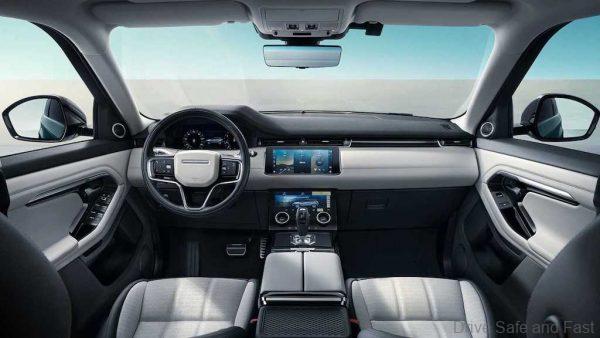The Evoque L replaces the standard Range Rover Evoque in China.
Every so often, car brands operating in China will produce a special long-wheelbase model to either complement or replace their standard-wheelbase model there. This is because a lot of buyers in the Chinese market look at rear legroom as a very important factor in a car. Whether these same buyers are occassionally being chauffered around or if they’re using their cars to drive around aging parents or other adults is not clear.

Whatever the case, a “long-wheelbase” or ‘L’ model is not uncommon from most premium brands. And we’re not even talking about large limousines either. It’s often the compact executive or executive-sized sedans that get lengthened. Now the time has come for Land Rover to deliver a long-wheelbase model of their own to the Chinese market.

The model in question is the latest Range Rover Evoque, which is built on the Premium Transverse Architecture (PTA), which underpins the Jaguar E-Pace and Land Rover Discovery Sport 2.

Compared to the original 2nd generation Range Rover Evoque, the Evoque L has its length increased from 4,371mm to 4,531mm – an increase of 16 centimetres. Of that length, 12.5 cm goes to better legroom for rear passengers.

Besides the dimensional change, there’s also a small change to the equipment. This Evoque L is fitted with electrically adjustable rear seat backs.

Also, the Evoque L will be pricier than the standard wheelbase model. Prices at launch stand at 430,000 yuan, which is up from the standard model’s entry price of 375,800 – though this is not a spec-for-spec price comparison.
One final note, and perhaps this is the most important one, is that the Ranger Rover Evoque standard wheelbase will no longer be available for sale in China. I suppose Land Rover figured this Evoque L made the standard model obsolete.
Details come from the company’s region-specific website.
Why Does China Get Long-Wheelbase Compact Cars?
China sometimes demands that specialised models be developed for their market. Whether this is to cater to region-specific tastes or if it’s a state requirement for all foreign car brands is not entirely clear. Maybe it’s a bit of both. These models tend to remain China-specific, but once in a while car companies decide to introduce them elsewhere. One example is the BMW 330Li, which was just given a launch price in Malaysia last week. Malaysia is not the only country outside of China to get such a model. It is also available in India and Thailand as the “3 Series Gran Limousine”.